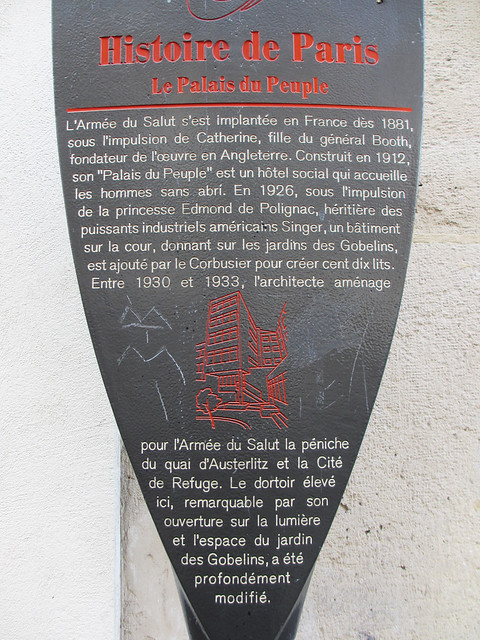Le Palais du Peuple L'Armée de Salut s'est implantée en France dès 1881, sous l'impulsion de Catherine, fille du général Booth, fondateur de l'oeuvre en Angleterre. Construit en 1912, son "Palais du Peuple" est un hôtel social qui accueille les hommes sans abri. En 1926, sous l'impulsion de la princesse Edmond de Polignac, héritière des puissants industriels américains Singer, un bâtiment sur la cour, donnant sur les jardins des Gobelins, est ajouté par Le Corbusier pour créer cent dis lits. Entre 1930 et 1933, l'architecte aménage pour l'Armée du Salut la péniche du quai d'Austerlitz et la Cité de Refuge. Le dortoire élevé ici, remarquable par son ouverture sur la lumière et l'espace du jardin des Gobelins, a été profondément modifié.
This is an approximate position
29 rue des Cordelières, Paris
[geolocate this address]
Google Streetview
OpenStreetMap

